
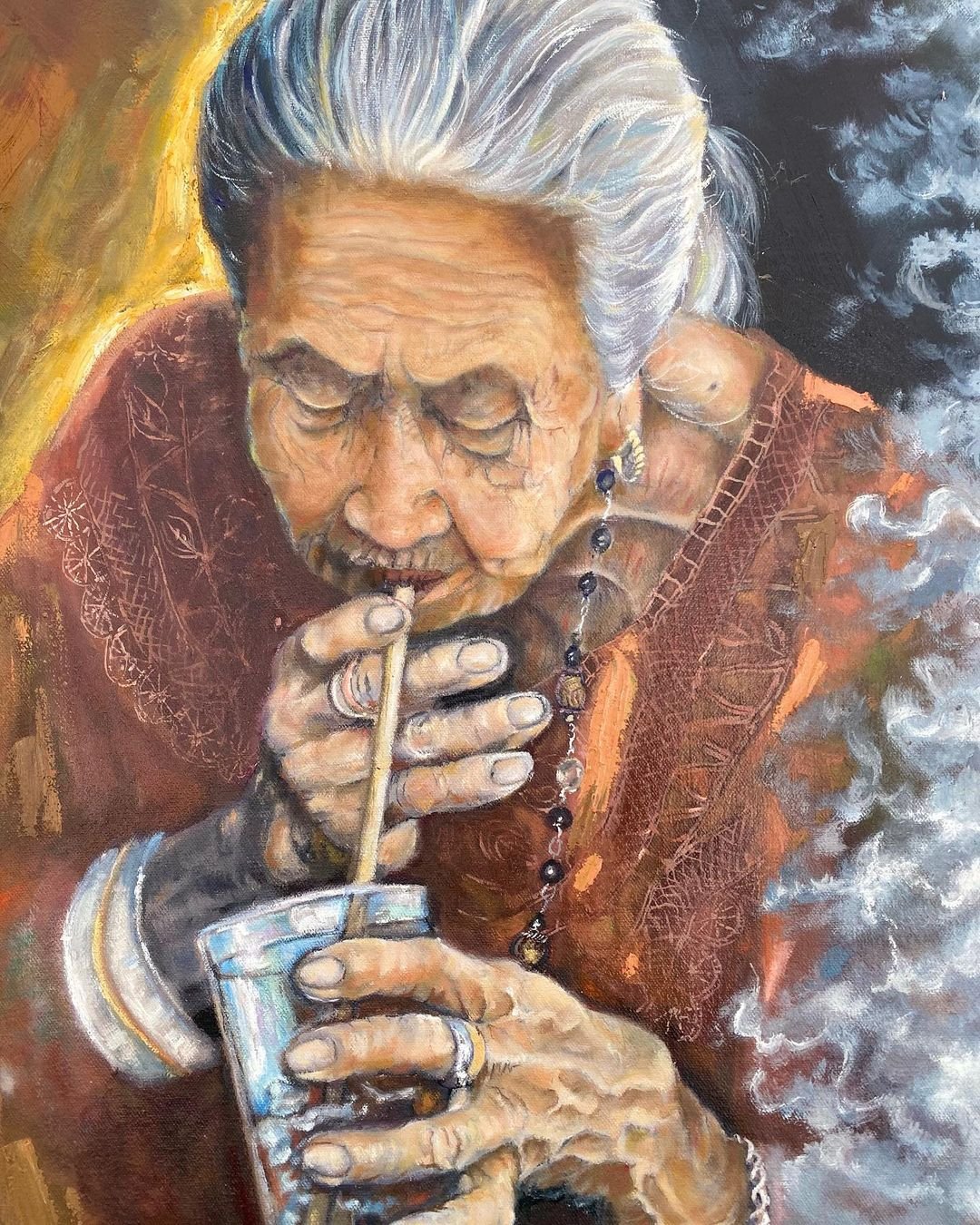
Siquijor Island of Fire | Home of The Witches (2024)
Siquijor Island of Fire, an island province in the Philippines, is not only renowned for its stunning beaches and waterfalls but also for its rich mystical heritage. Among the island’s most intriguing aspects is its long-standing association with witchcraft and traditional healing practices. This reputation has made Siquijor a fascinating destination for those curious about the supernatural and cultural traditions of the Philippines.
Historical Background
The mystical reputation of Siquijor dates back to pre-colonial times when local shamans, known as “mangkukulam” (witches) and “mananambal” (healers), played a significant role in the community. These individuals were believed to possess supernatural powers and were consulted for various ailments and spiritual issues. Over the centuries, these practices have been passed down through generations, blending with Spanish colonial influences and local folklore.
The Witches and Healers of Siquijor
Mangkukulam (Witches)
Mangkukulam are often viewed with a mix of fear and respect. Traditionally, they were believed to cast spells, create potions, and perform rituals that could either harm or heal. While the idea of witchcraft often carries a negative connotation, in Siquijor, it is more complex. The island’s witches are seen as guardians of ancient knowledge and traditions.
Mananambal (Healers)
In contrast to the mangkukulam, the mananambal are revered as traditional healers who use herbal medicine, spiritual rituals, and incantations to cure illnesses and protect against malevolent forces. They are an integral part of the island’s cultural fabric, and many locals still seek their help for both physical and spiritual ailments.
The Siquijor Healing Festival
One of the best times to witness the island’s mystical practices is during the annual Healing Festival, held around Holy Week. During this period, local healers gather to prepare their potions and perform rituals, a tradition that attracts both locals and tourists.
Activities and Rituals
- Preparation of Herbal Potions: Healers collect various herbs, roots, and other natural ingredients from the island’s forests. These are believed to have medicinal and magical properties.
- Healing Rituals: Public demonstrations of healing practices, including massages, prayers, and the application of herbal concoctions.
- Blessings and Talismans: Healers create and bless amulets or “anting-anting,” which are believed to offer protection and bring good luck.
Visiting a Local Healer
For those intrigued by Siquijor’s mystical side, visiting a local healer can be a fascinating experience. It’s important to approach these interactions with respect and an open mind.
What to Expect
- Consultation: The healer will typically start with a consultation to understand your ailment or concern. This might involve questions about your symptoms and personal history.
- Diagnosis: Some healers use traditional methods to diagnose issues, such as reading the smoke from burning herbs or interpreting signs in nature.
- Treatment: Treatment can include herbal remedies, massages, and spiritual rituals. The healer may also provide you with an amulet or potion to take home.
Respecting Local Beliefs and Practices
When exploring Siquijor’s mystical heritage, it’s crucial to approach with respect and sensitivity. Here are some tips to ensure a respectful and enriching experience:
- Be Open-Minded: Remember that these practices are a deeply ingrained part of the local culture. Approach with curiosity and respect rather than skepticism.
- Seek Permission: Always ask for permission before taking photos or recording any rituals. Some healers may prefer to keep their practices private.
- Support Local Communities: Consider purchasing herbal remedies, amulets, or other traditional items from local healers to support their livelihoods.
The Modern Perception of Witchcraft in Siquijor
Today, Siquijor’s reputation as a land of witches and healers is both a source of pride and curiosity. While some locals fully embrace these traditions, others view them more as cultural heritage rather than active belief. The island’s mystical image continues to attract tourists, scholars, and those with an interest in the supernatural.
Table of Contents
How to get to Siquijor Island of Fire
Traveling to Siquijor by air involves flying to nearby cities and then transferring to a ferry. Here’s a detailed guide on the nearest airports and connecting flights:
Nearest Airports in Siquijor Island of Fire
Dumaguete (Sibulan Airport – DGT):
- Location: Dumaguete is the closest airport to Siquijor, located on Negros Island, about 45 kilometers from Siquijor.
- Airlines: Cebu Pacific, Philippine Airlines.
- Connecting Flights: Direct flights from Manila and Cebu. Flight duration is approximately 1 hour from Manila and 45 minutes from Cebu.
Cebu (Mactan-Cebu International Airport – CEB):
- Location: Cebu is a major airport hub in the Visayas, located on Mactan Island.
- Airlines: Philippine Airlines, Cebu Pacific, AirAsia.
- Connecting Flights: Numerous daily flights from Manila, and other international destinations. Flight duration from Manila is around 1.5 hours.
Bohol (Tagbilaran Airport – TAG):
- Location: Tagbilaran is a convenient airport on Bohol Island, around 2 hours by ferry from Siquijor.
- Airlines: Philippine Airlines, Cebu Pacific, AirAsia.
- Connecting Flights: Direct flights from Manila, Cebu, and other major cities. Flight duration from Manila is about 1.5 hours and from Cebu is around 45 minutes.
From DGT/CEB/TAG to Siquijor
Once you arrive at the nearest airports, the next step is to take a ferry to Siquijor. Here are the detailed options:
Ferry Options:
From Dumaguete:
- Ferry Operators: OceanJet, Montenegro Lines, Aleson Shipping Lines.
- Schedule: Multiple trips daily, starting from early morning until late afternoon.
- Travel Time: Approximately 1 to 1.5 hours.
- Ticket Prices: Economy class – $7 to $10; Business class – $15 to $20.
From Cebu:
- Ferry Operators: OceanJet (direct to Siquijor), Cokaliong Shipping Lines (via Dumaguete).
- Schedule: Limited trips, usually one direct trip daily.
- Travel Time: Direct trips take about 4 to 5 hours.
- Ticket Prices: Economy class – $20 to $30; Business class – $35 to $50.
From Bohol (Tagbilaran):
- Ferry Operators: OceanJet.
- Schedule: Usually one trip daily.
- Travel Time: Approximately 2 hours.
- Ticket Prices: Economy class – $15 to $20; Business class – $25 to $35.
Estimated Ferry Costs:
- Dumaguete to Siquijor: $7 – $20 (one-way, depending on the class).
- Cebu to Siquijor: $20 – $50 (one-way, depending on the class and whether the trip is direct or via Dumaguete).
- Bohol to Siquijor: $15 – $35 (one-way, depending on the class).
Total Estimated Travel Costs (One-Way):
- From Manila to Siquijor via Dumaguete: $37 – $120 (airfare + ferry).
- From Cebu to Siquijor: $40 – $170 (airfare + ferry, depending on direct or via Dumaguete).
- From Bohol to Siquijor: $15 – $35 (ferry only, if already in Bohol).
Tips for a Smooth Journey
- Booking in Advance: It’s advisable to book flights and ferry tickets in advance, especially during peak travel seasons (November to May).
- Check Schedules: Ferry schedules can change, so it’s essential to check the latest schedule a day before your trip.
- Travel Light: Ferries may have luggage limits and additional charges for extra baggage.
- Arrive Early: Arrive at the ferry terminal at least an hour before departure to avoid any last-minute hassles.

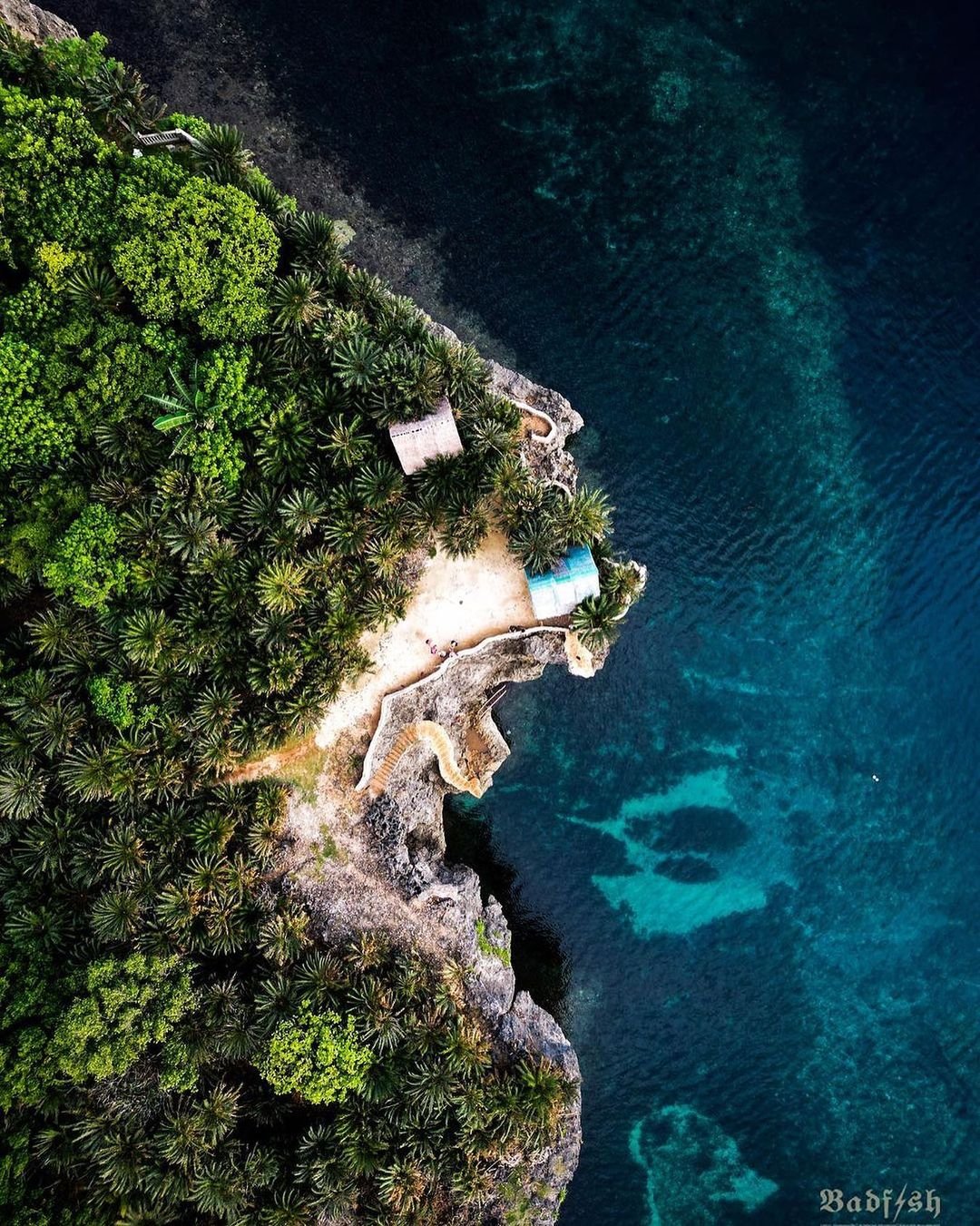

Top view of Pitogo Cliff
Image Courtesy @badfishco.siquijor
Getting Around Siquijor Isalnd of Fire
Tricycles in Siquijor
Tricycles are a quintessential mode of transport in Siquijor, offering an authentic local experience. These motorbike-powered vehicles with a sidecar are ubiquitous and cater to short and medium distances.
- Availability: Tricycles are readily available in all major towns and tourist areas. You can hail them on the street or arrange a ride through your accommodation.
- Capacity: Typically, a tricycle can comfortably seat 2-3 passengers.
Cost:
- Short Distance (within towns): PHP 20-50 ($0.40 – $1) per person.
- Medium Distance (between nearby towns): PHP 100-250 ($2 – $5).
- Long Distance (cross-island): PHP 500-1000 ($10 – $20), negotiable based on distance and the number of passengers.
Advantages: Tricycles are perfect for short trips and provide an authentic glimpse into local life. They are relatively inexpensive and readily available.
Motorcycles and Scooter Rentals in SIquijor
For those seeking freedom and flexibility, renting a motorcycle or scooter is an excellent choice. This mode of transport is particularly popular among tourists, as it allows you to explore the island at your own pace.
- Rental Shops: Numerous rental shops are located in Siquijor, San Juan, and Larena.
- Requirements: A valid driver’s license is required. Ensure to check the condition of the bike before renting.
Cost:
- Daily Rental Fee: PHP 400-600 ($8 – $12).
- Fuel Cost: Approximately PHP 50 ($1) per liter; a full tank typically costs around PHP 250 ($5).
Advantages: Renting a motorcycle or scooter offers unmatched flexibility, allowing you to visit remote beaches, waterfalls, and other attractions that may not be accessible via tricycle. It’s a cost-effective way to explore the island extensively.
Car Rentals in Siquijor
For groups or families, renting a car can provide comfort and convenience. While less common than motorcycles, car rentals are available through some resorts and rental agencies.
- Rental Services: Available in major towns and through certain accommodations.
- Requirements: A valid driver’s license is required, and it’s advisable to book in advance, especially during peak seasons.
- Cost:
- Daily Rental Fee: PHP 2000-3000 ($40 – $60).
- Fuel Cost: Approximately PHP 50 ($1) per liter; a full tank typically costs around PHP 2500 ($50).
Advantages: Renting a car is ideal for families, groups, or travelers with significant luggage. It provides comfort, especially when traveling with children or elderly family members.
Best Time to Visit Siquijor Island
Climate and Weather
Siquijor Island of fire enjoys a tropical climate, characterized by two distinct seasons: the dry season and the rainy season. Understanding these seasons can help you decide when to visit.
Dry Season (November to May)
The dry season is the most popular time for tourists to visit Siquijor. During this period, the weather is generally sunny and pleasant, making it ideal for outdoor activities and beach excursions.
- Temperature: Average temperatures range from 24°C to 32°C (75°F to 90°F).
- Rainfall: Rainfall is minimal, ensuring clear skies and calm seas, perfect for swimming, diving, and island hopping.
- Humidity: Humidity levels are lower compared to the rainy season, making it more comfortable for exploring and sightseeing.
Rainy Season (June to October)
The rainy season, while less popular among tourists, has its own charm. This period is characterized by more frequent rainfall and higher humidity levels.
- Temperature: Average temperatures remain warm, ranging from 23°C to 31°C (73°F to 88°F).
- Rainfall: Rainfall is more frequent, often occurring in short, heavy bursts, particularly in the afternoons and evenings.
- Humidity: Humidity levels are higher, which can make the weather feel warmer and more intense.
Festivals and Events in Siquijor Island
Siquijor Island of Fire Island of fire is not just about natural beauty; it also boasts a rich cultural heritage. The island’s festivals and events provide a unique glimpse into its traditions and customs.
Siquijor Healing Festival
The Siquijor Healing Festival is one of the most significant cultural events on the island, attracting both locals and tourists interested in the island’s mystical traditions.
- When: The festival typically takes place during Holy Week (March or April), a significant period in the Christian calendar.
- What to Expect: The festival is a celebration of the island’s traditional healing practices and involves various activities, including:
- Healing Rituals: Witness local healers, known as “mananambal,” performing traditional healing rituals using herbs, oils, and incantations.
- Preparation of Potions: Observe the preparation of traditional healing potions, which are believed to have medicinal and magical properties.
- Cultural Performances: Enjoy cultural performances, including traditional dances, music, and storytelling that reflect the island’s folklore and heritage.
Folk Healing Traditions
Siquijor Island of Fire is renowned for its folk healing traditions, which are an integral part of the island’s cultural identity. These practices have been passed down through generations and are deeply rooted in the island’s history.
- Healing Practices: Local healers use a combination of herbs, oils, prayers, and rituals to treat various ailments. These practices are a blend of indigenous beliefs and Catholicism.
- Faith Healing: Faith healing is common, where healers invoke divine intervention to cure illnesses. This often involves the use of religious icons, holy water, and prayer.
- Herbal Medicine: The use of herbal medicine is prevalent, with healers preparing remedies from locally sourced plants and herbs known for their medicinal properties.
- Spiritual Cleansing: Rituals for spiritual cleansing and protection are performed to ward off evil spirits and negative energies.
Participating in Healing Traditions:
- Consultation: Visitors can consult with local healers for a nominal fee or donation. It’s a unique opportunity to experience these age-old practices firsthand.
- Workshops: Some healers offer workshops where tourists can learn about the preparation of traditional remedies and the cultural significance of healing rituals.
- Respect and Sensitivity: When participating in or observing these practices, it’s important to show respect and sensitivity towards the local culture and traditions.
Best Attractions in Siquijor Island
Siquijor Island of Fire, often called the “Island of Fire,” is a haven of natural beauty, mystical traditions, and historical charm. From pristine beaches to enchanting waterfalls, historical sites, and nature parks, Siquijor offers a variety of attractions that cater to every type of traveler. Here’s a detailed guide to the best attractions on this captivating island.
Salagdoong Beach
Salagdoong Beach, located in Maria on the northeastern part of Siquijor Island of fire, is one of the island’s most famous beaches, celebrated for its stunning scenery and thrilling activities. The beach is renowned for its crystal clear, turquoise waters, making it perfect for swimming and snorkeling. One of the highlights of Salagdoong Beach is its cliff diving platforms, which stand at heights of 7 and 10 meters, providing an adrenaline-pumping experience for adventurous visitors. The beach is well-equipped with various facilities, including picnic huts, a restaurant, and rental services for kayaks and snorkel gear, ensuring a comfortable and enjoyable visit.

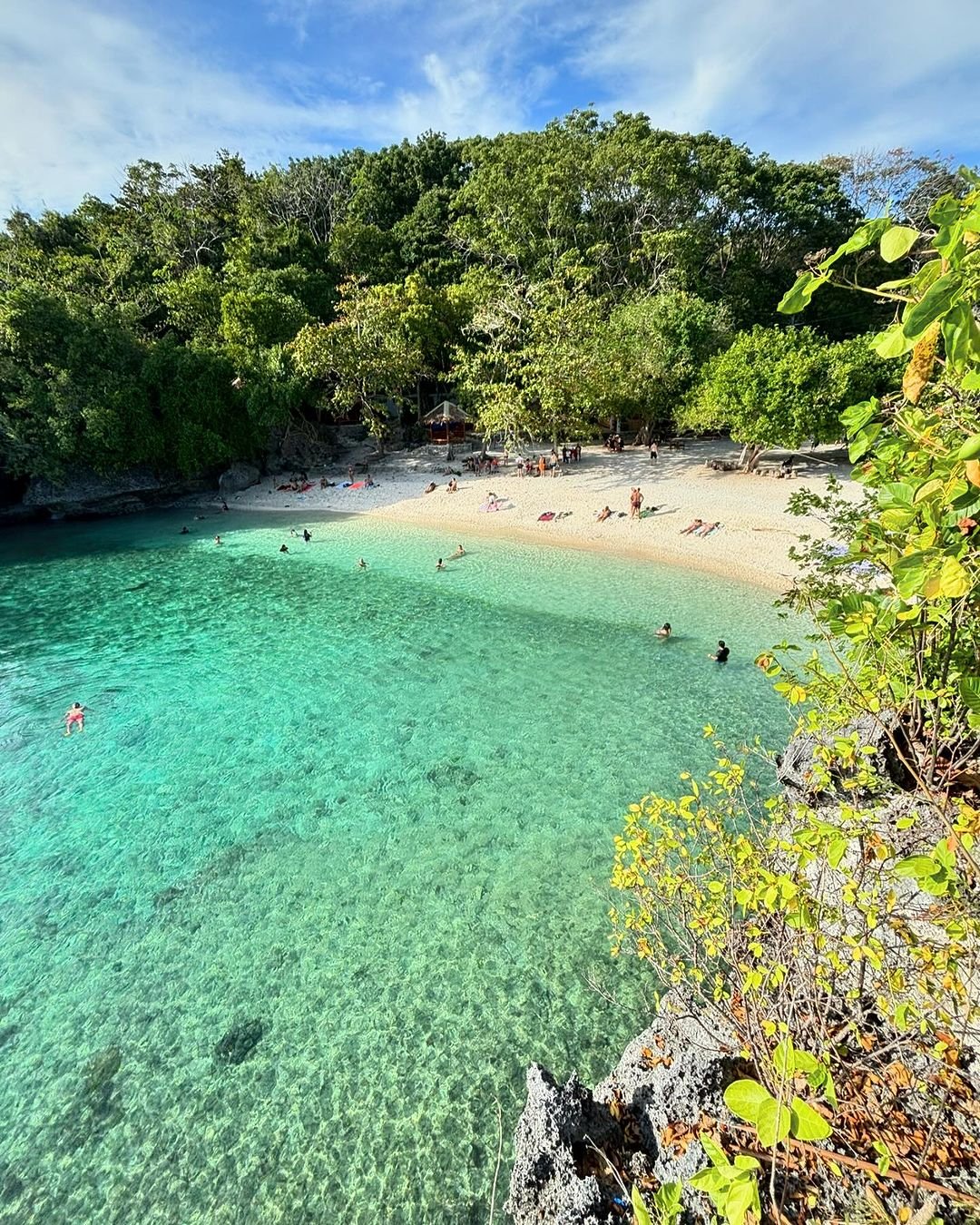

Image Courtesy : ro-riso
Paliton Beach Siquijor Island
Paliton Beach, situated in San Juan on the western side of Siquijor, is often compared to the Maldives due to its powdery white sand and serene atmosphere. This beach is renowned for its breathtaking sunset views, making it a popular spot for watching the sun dip below the horizon. The waters around Paliton Beach are teeming with marine life, providing excellent opportunities for snorkeling. Additionally, Paliton Beach offers a tranquil and peaceful setting, making it an ideal destination for those seeking relaxation away from the busier beaches.

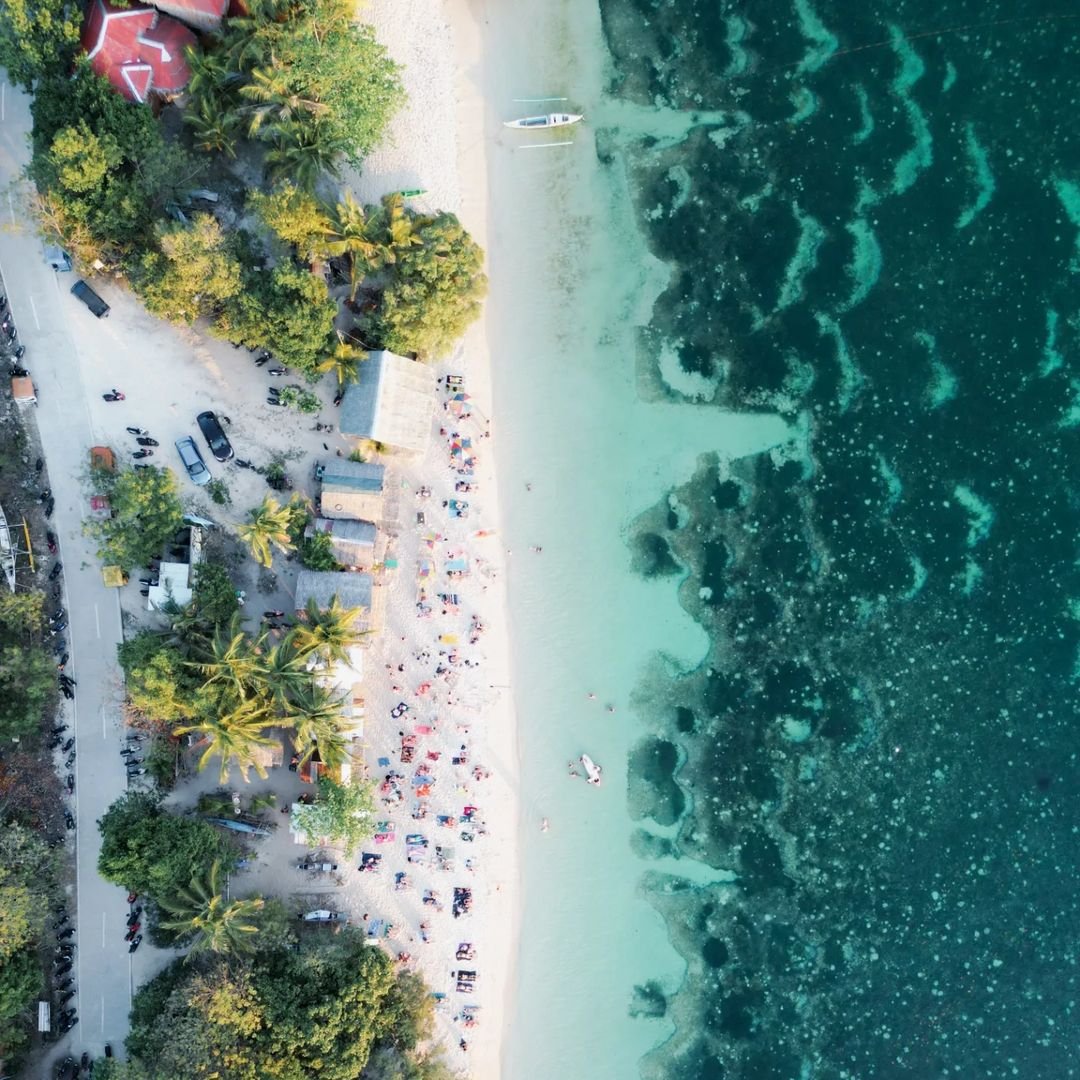

Image Courtesy: JohnGalve
Cambugahay Falls Siquijor Island
Cambugahay Falls, located in the town of Lazi, is one of Siquijor’s most iconic attractions, celebrated for its multi-tiered cascades and emerald waters. The falls feature several natural pools, perfect for swimming, and offer rope swings for adventurous plunges into the refreshing water. Surrounded by lush vegetation, Cambugahay Falls provides a picturesque setting ideal for relaxation and photography. A short hike down a series of steps makes the falls accessible to most visitors, adding to its appeal as a must-visit destination on the island.

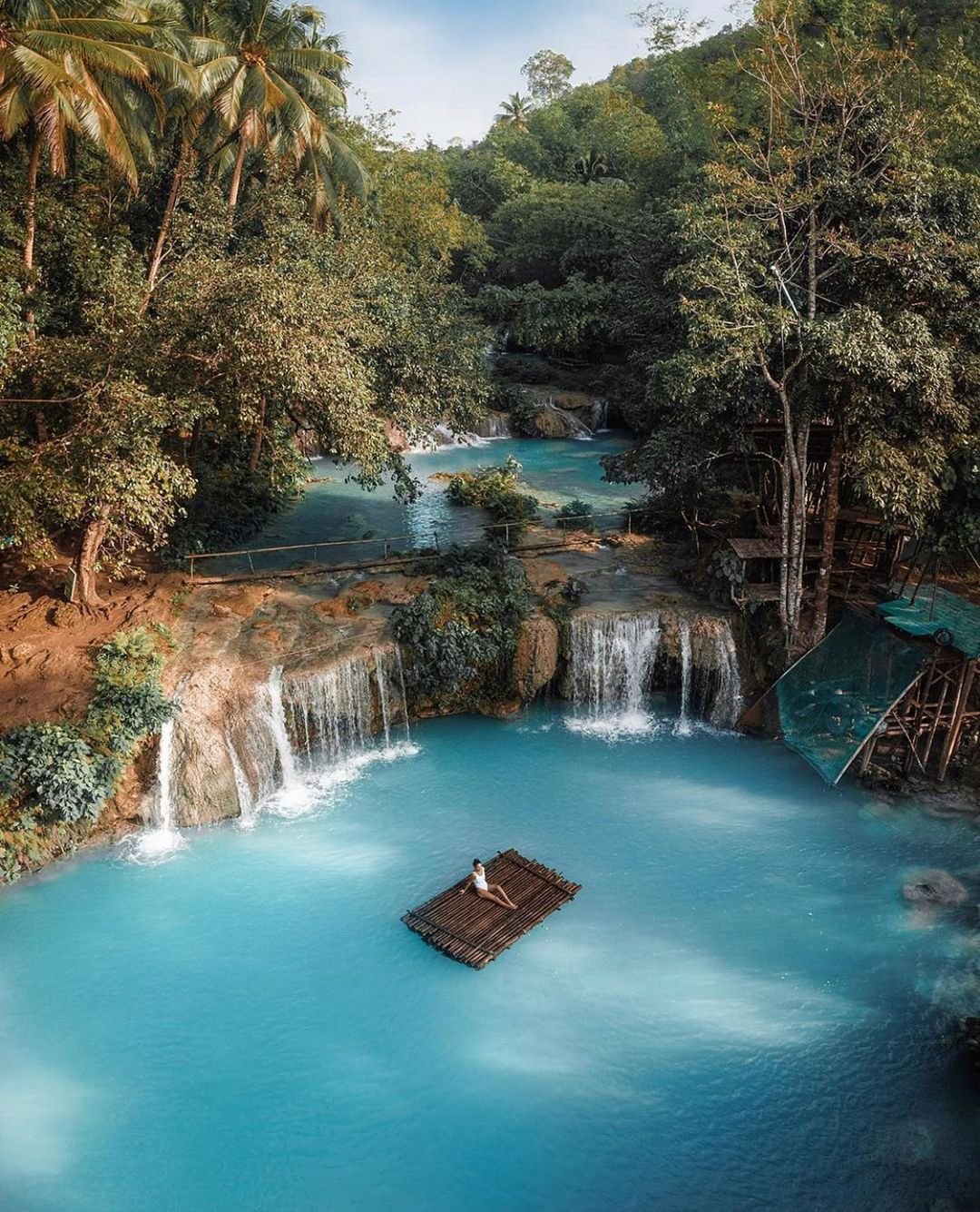

Image Courtesy: SiquijorIslandPH
Lugnason Falls Siquijor Island
Lugnason Falls, located in San Juan, is a lesser-known gem that offers a tranquil escape with its serene surroundings. The falls are less crowded compared to Cambugahay, providing a peaceful retreat for visitors. The cool waters of Lugnason Falls are perfect for a refreshing swim. An interesting feature of Lugnason Falls is its inclusion in the Zodiac Falls, a series of twelve smaller falls, each named after an astrological sign, adding a unique thematic element to the experience.

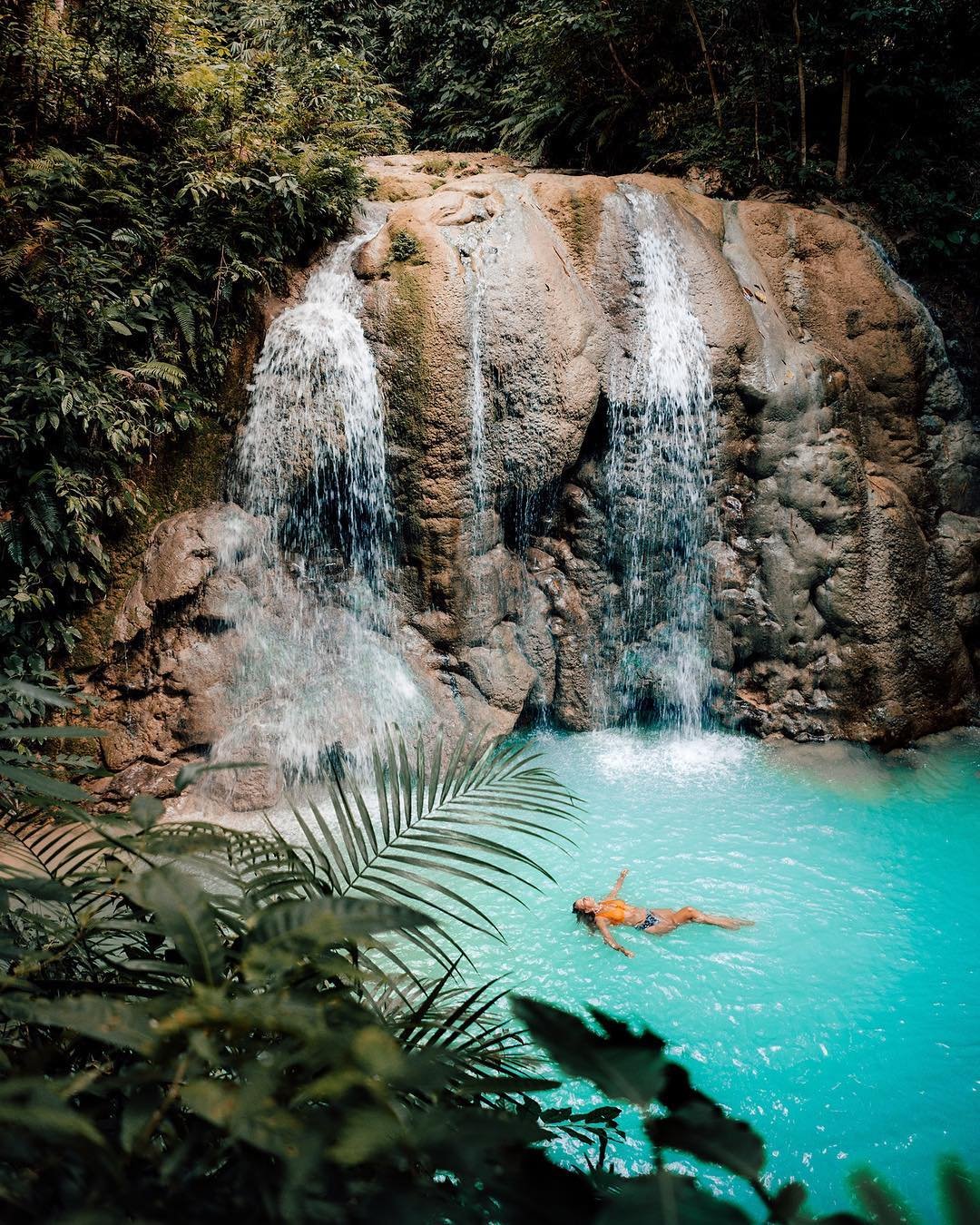

Image Courtesy: saltinourhair
St. Francis of Assisi Church Siquijor Island
St. Francis of Assisi Church, located in Siquijor town near the port, is a significant historical and cultural landmark known for its simple yet charming architecture. Built in 1783, it stands as one of the oldest churches on the island, reflecting its historical significance. The church is set in a peaceful environment, featuring a bell tower and a courtyard that provide a glimpse into the island’s colonial past, adding to its serene and reflective atmosphere.

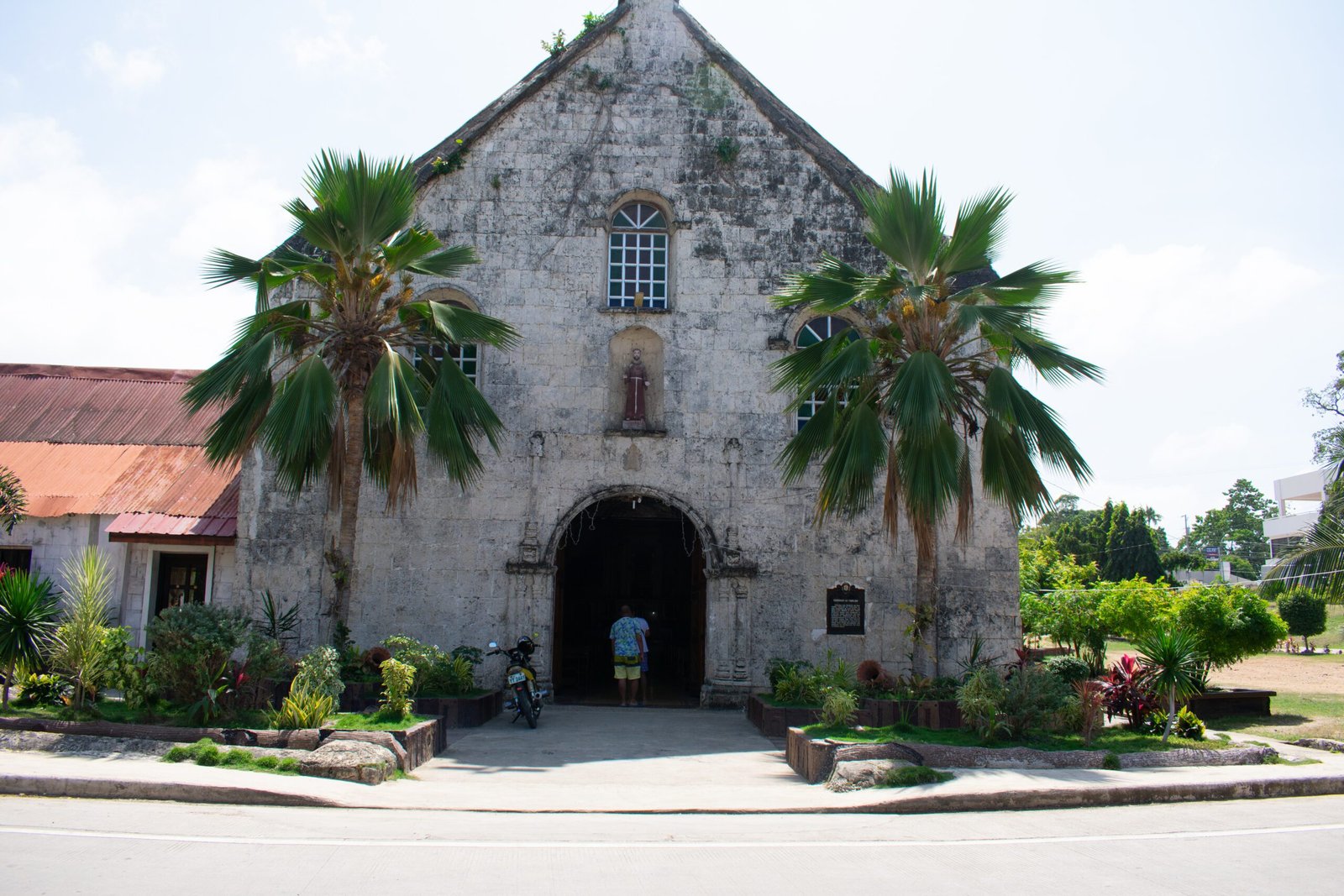

Lazi Church and Convent Siquijor Island
Lazi Church and Convent, also known as San Isidro Labrador Church, is a must-visit destination for history enthusiasts. Located in the town of Lazi, which is rich in colonial history, the church was built in 1884 and is made of coral stones and hardwood, showcasing impressive Spanish colonial architecture. The church and convent have been nominated for inclusion in the UNESCO World Heritage List, recognizing their historical and cultural value. Adjacent to the church is the Lazi Convent, one of the largest convents built during the Spanish era in the Philippines, which now houses a museum.
Mt. Bandilaan National Park Siquijor Island
Mt. Bandilaan National Park, located in the heart of Siquijor Island, is a haven for nature lovers, offering lush landscapes and diverse flora and fauna. The park is home to Siquijor’s highest peak, Mt. Bandilaan, which provides panoramic views of the island. Numerous trails meander through dense forests, presenting excellent opportunities for hiking and bird-watching. Additionally, the park is dotted with healing sites and shrines, reflecting the island’s mystical traditions and adding a spiritual dimension to the natural beauty of the area.
Butterfly Sanctuary Siquijor Island
Nestled near the town of Cang-apa, the Butterfly Sanctuary stands as a delightful attraction for those fascinated by Siquijor’s biodiversity. Boasting a diverse array of butterfly species, it serves as a showcase of the island’s rich ecological tapestry. Through guided tours, visitors gain valuable insights into butterfly life cycles and the critical importance of conservation efforts. Moreover, the sanctuary provides ample opportunities for photography enthusiasts to capture the vivid hues and intricate patterns of butterflies amidst their natural habitat, adding to the immersive experience of exploring this captivating haven.
Activities and Experiences in Siquijor
Siquijor, an island of mystery and enchantment, offers a plethora of activities and experiences that cater to every type of traveler. Whether you’re an adventure seeker, a culture enthusiast, or someone looking to relax and unwind, Siquijor has something for everyone. Here’s a detailed guide to the best activities and experiences you can enjoy on this magical island.
Diving and Snorkeling in Siquijor Island
Tulapos Marine Sanctuary
Situated along the northeastern coast of Siquijor Island of fire, near Enrique Villanueva, Tulapos Marine Sanctuary stands as a protected area offering an exceptional diving and snorkeling experience. Its highlight features include a rich variety of coral reefs thriving with marine biodiversity, such as vibrant fish, graceful sea turtles, and occasional reef sharks. With excellent visibility often extending up to 30 meters, the sanctuary presents an ideal setting for underwater photography enthusiasts. Additionally, its shallow areas provide perfect snorkeling spots, granting easy access to explore the vibrant coral gardens beneath the surface.

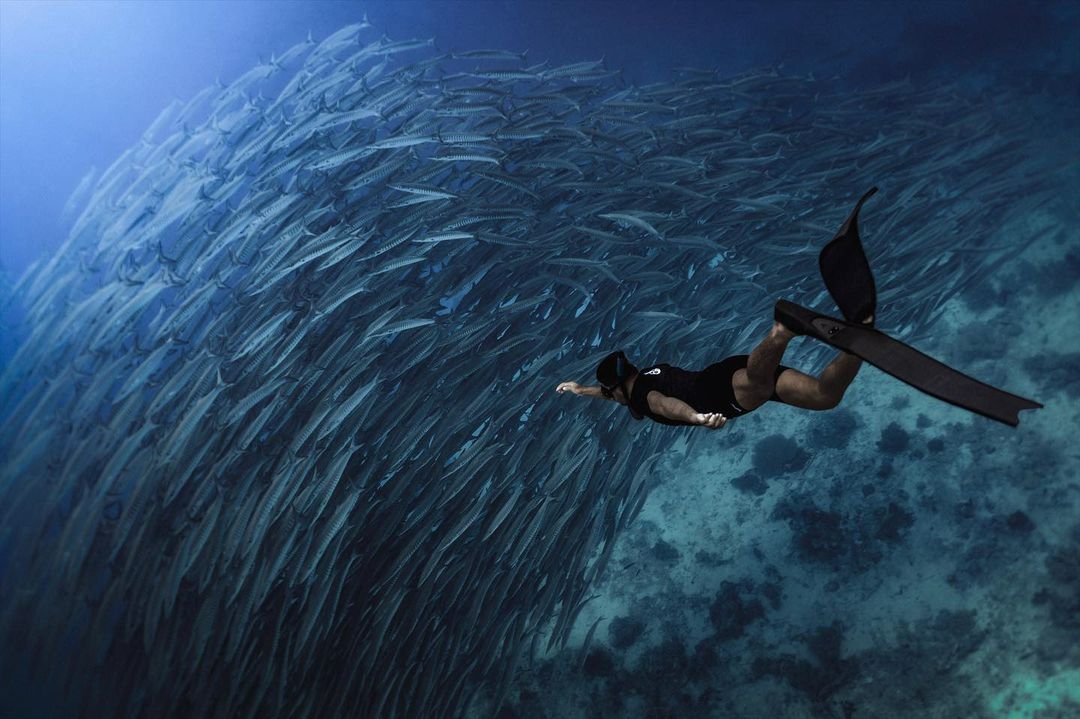

Image Courtesy: @jedo_kdg
Apo Island Siquijor
Although not part of Siquijor Island of fire itself, Apo Island, just a short boat ride away, stands as one of the premier diving destinations in the region. Accessible from the southern tip of Siquijor, typically via Dumaguete, this island gem boasts a wealth of attractions. Its marine biodiversity is renowned, with over 650 documented fish species and an impressive 400 types of corals. A highlight for visitors is the chance to swim alongside majestic sea turtles, particularly at Turtle Point. Moreover, Apo Island offers a plethora of diving sites suitable for enthusiasts of all skill levels, ensuring an unforgettable underwater experience for beginners and advanced divers alike.

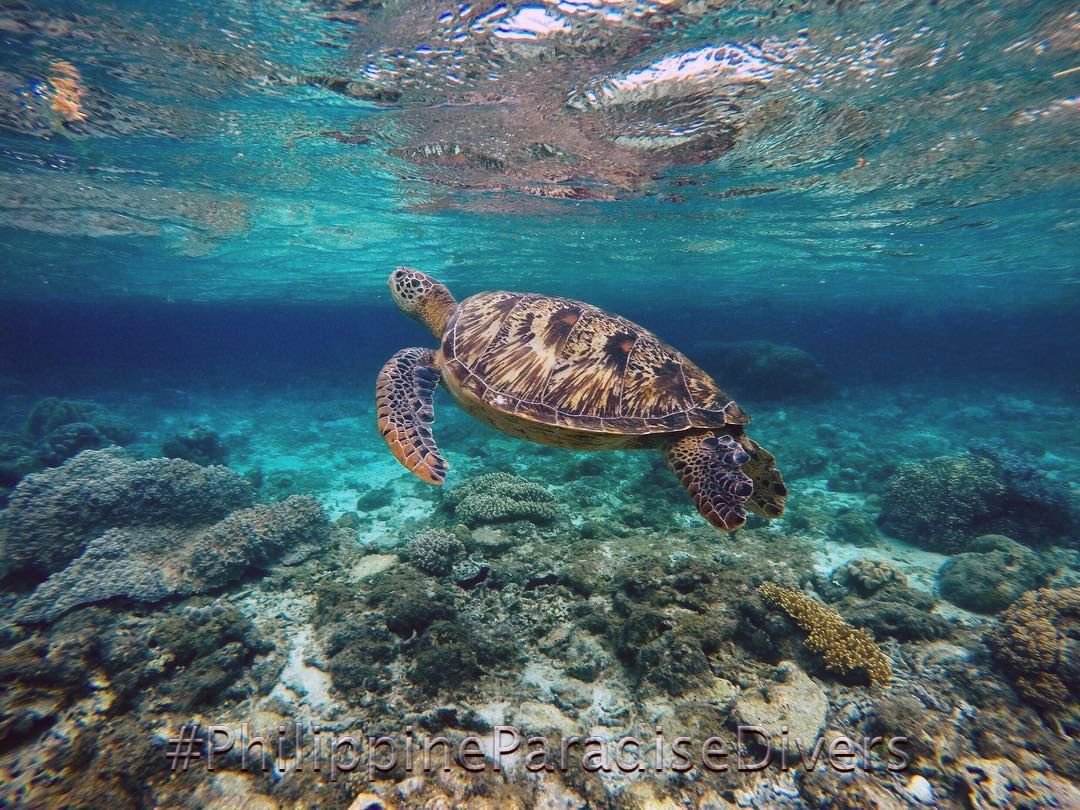

Image Courtesy: @shervanz
Dive Shops and Tour Operators in Siquijor
To fully enjoy the diving and snorkeling opportunities in Siquijor, it’s important to choose a reputable dive shop or tour operator.
- Coco Grove Dive Shop: Located in San Juan, Coco Grove offers comprehensive diving packages, equipment rentals, and PADI certification courses. They also organize trips to Apo Island.
- Sea Pearl Divers: Also based in San Juan, Sea Pearl Divers provide personalized diving experiences, focusing on small groups to ensure safety and a tailored experience.
- Scuba Diving and Marine Tours: Many resorts and hotels offer in-house diving tours and packages. It’s worth checking with your accommodation for any special deals or partnerships with local dive shops.
Cultural Experiences in Siquijor Island
Siquijor’s rich cultural heritage and mystical traditions provide a unique cultural experience for visitors. Engage with the local culture through traditional healing practices and handicrafts.
Traditional Healing and Local Folklore
Siquijor is renowned for its traditional healing practices, deeply rooted in local folklore and spirituality.
- Healing Festivals: Attend the Siquijor Healing Festival, held annually during Holy Week, where local healers showcase their traditional healing rituals and prepare herbal potions.
- Faith Healers: Visit local faith healers, known as “mananambal,” who use a combination of herbs, prayers, and rituals to treat various ailments. Consultations are often available for a small fee or donation.
- Mystical Tours: Some tour operators offer mystical tours that include visits to healing sites, sacred trees, and other locations significant to the island’s spiritual practices.
Handicrafts and Souvenirs
Siquijor’s local artisans produce beautiful handicrafts that make for perfect souvenirs and gifts.
- Woven Products: The island is known for its handwoven products, including baskets, mats, and hats made from local materials such as bamboo and rattan.
- Herbal Products: Purchase locally made herbal products, such as oils, balms, and potions, often sold in markets and by local healers.
- Wood Carvings: Intricately carved wooden items, depicting local folklore and daily life, are popular souvenirs.
- Markets and Shops: Visit local markets and shops in towns like Siquijor and San Juan to find a variety of handmade products. Supporting local artisans helps preserve traditional crafts and contributes to the local economy
Where to Stay in Siquijor Island
For those seeking a luxurious and relaxing experience, Siquijor Island of Fire offers several high-end resorts with excellent amenities and stunning locations.
Coco Grove Beach Resort
- Location: San Juan
Highlights:
- Beachfront Access: Direct access to a private beach with crystal-clear waters.
- Amenities: Multiple swimming pools, restaurants, a spa, and dive center.
- Activities: Snorkeling, diving, island hopping, and cultural shows.
- Rates: Prices start around PHP 4,000 per night.
Salamangka Beach and Dive Resort
- Location: San Juan
Highlights:
- Diving Facilities: On-site dive shop offering courses and excursions.
- Luxury Villas: Comfortable and spacious villas with modern amenities.
- Recreational Options: Infinity pool, yoga sessions, and a wellness spa.
- Rates: Prices start around PHP 5,000 per night.
Budget Hostels in Siquijor Island of fire
For those seeking a luxurious and relaxing experience, Siquijor Island of Fire offers several high-end resorts with excellent amenities and stunning locations.
Coco Grove Beach Resort
- Location: San Juan
Highlights:
- Beachfront Access: Direct access to a private beach with crystal-clear waters.
- Amenities: Multiple swimming pools, restaurants, a spa, and dive center.
- Activities: Snorkeling, diving, island hopping, and cultural shows.
- Rates: Prices start around PHP 4,000 per night.
Salamangka Beach and Dive Resort
- Location: San Juan
Highlights:
- Diving Facilities: On-site dive shop offering courses and excursions.
- Luxury Villas: Comfortable and spacious villas with modern amenities.
- Recreational Options: Infinity pool, yoga sessions, and a wellness spa.
- Rates: Prices start around PHP 5,000 per night.
Homestays in Siquijor Island
For an authentic and immersive experience, consider staying in a local homestay. This option allows you to connect with the local community and experience daily life on the island.
Casa Miranda
- Location: Larena
- Highlights:
- Homey Feel: Comfortable rooms within a local family home.
- Cultural Insight: Opportunity to learn about local customs and traditions.
- Local Cuisine: Home-cooked meals featuring traditional Filipino dishes.
- Rates: Prices start around PHP 1,000 per night.
Traditional Filipino House
- Location: San Juan
- Highlights:
- Authentic Experience: Stay in a traditional bamboo house.
- Personal Interaction: Hosts provide insights into local culture and history.
- Activities: Hosts may offer guided tours and activities such as cooking classes or visits to local markets.
- Rates: Prices start around PHP 800 per night.
Recommended Areas
San Juan
San Juan is the most popular area for tourists, known for its beautiful beaches, vibrant nightlife, and a wide range of accommodations.
- Why Stay Here: Central location with easy access to major attractions, dive spots, and restaurants.
- Highlights: Paliton Beach, Capilay Spring Park, and numerous dive shops and beach bars.
Larena
Larena is a quieter area, ideal for those seeking a more peaceful and laid-back environment.
- Why Stay Here: Proximity to the port, historical sites, and a more local experience.
- Highlights: St. Francis of Assisi Church, local markets, and nearby waterfalls.
Where to Eat in Siquijor
Popular Restaurants and Cafes in Siquijor
San Juan
San Juan is the most popular area for tourists and offers a variety of dining options, from beachfront eateries to cozy cafes.
Baha Bar
- Cuisine: Filipino and international
Highlights:
- Ambiance: A laid-back, beachfront setting with a rustic charm.
- Must-Try Dishes: Seafood platter, pork adobo, and vegetarian options.
- Drinks: Extensive cocktail menu and local craft beers.
Dagsa Restaurant
- Cuisine: Filipino and fusion
Highlights:
- Ambiance: Artistic decor with live music on weekends.
- Must-Try Dishes: Grilled seafood, homemade pizza, and local desserts.
- Location: Right on the beach, perfect for sunset dining.
Monkey Business
- Cuisine: International
Highlights:
- Ambiance: Vibrant and lively atmosphere with a bar and lounge area.
- Must-Try Dishes: Burgers, wraps, and tropical fruit shakes.
- Special Feature: Regular events like quiz nights and live music.
Siquijor Town
Siquijor Town, the island’s capital, offers a more laid-back dining experience with a focus on local flavors and traditional eateries.
Joel’s Lechon Manok and Liempo
- Cuisine: Filipino
Highlights:
- Specialty: Famous for its lechon manok (roasted chicken) and liempo (grilled pork belly).
- Ambiance: Simple and no-frills, focused on good food.
- Must-Try Dishes: Lechon manok, liempo, and various grilled seafood.
Belle’s Kitchen
- Cuisine: Filipino and seafood
Highlights:
- Ambiance: Cozy, family-run eatery with a friendly atmosphere.
- Must-Try Dishes: Fresh seafood, kinilaw, and traditional Filipino breakfast.
- Location: Central location in Siquijor Town, easy to find.
Travel Tips for Siquijor: A Comprehensive Guide
Traveling to Siquijor promises a journey filled with stunning landscapes, rich culture, and unforgettable experiences. To ensure your trip is smooth and enjoyable, it’s important to be well-prepared. Here are some detailed travel tips covering health and safety, cultural etiquette, packing essentials, and budgeting.
Cultural Etiquette
Understanding and respecting local customs is crucial for a positive experience in Siquijor.
Local Customs and Manners
- Greetings: A warm smile and a polite greeting such as “Magandang umaga” (Good morning) or “Magandang hapon” (Good afternoon) go a long way. Filipinos often greet with a handshake, but a friendly nod or wave is also acceptable.
- Respect for Elders: Address older people with “Po” and “Opo” to show respect. These words are used to signify politeness.
- Dress Modestly: While beachwear is fine at the beach, dress modestly when visiting towns, churches, and rural areas. Avoid skimpy clothing out of respect for the local culture.
- No Public Displays of Affection: Holding hands is generally acceptable, but excessive public displays of affection can be frowned upon.
Packing Essentials
Packing the right items can make your stay in Siquijor more comfortable and enjoyable.
What to Bring
- Clothing: Light, breathable clothing for the tropical climate. Include swimwear, but also pack modest outfits for visiting local towns and cultural sites.
- Footwear: Comfortable walking shoes for exploring, sandals for the beach, and water shoes for rocky areas and waterfalls.
- Toiletries: Basic toiletries, sunscreen with high SPF, insect repellent with DEET, and any personal medications.
- Electronics: Power bank, universal adapter, waterproof phone case, and your camera to capture the beautiful scenery.
- First Aid Kit: Include band-aids, antiseptic wipes, motion sickness pills, pain relievers, and any prescription medications.
Budgeting
Understanding the costs and having money-saving tips can help you budget effectively for your trip.
Average Daily Costs
- Accommodation: Budget hostels range from PHP 300-800 per night. Mid-range hotels and resorts cost around PHP 1,500-3,000 per night, while luxury resorts can be PHP 4,000 and up.
- Food: Street food and local eateries cost about PHP 50-150 per meal. Mid-range restaurant meals are around PHP 300-600, and higher-end dining can be PHP 800+ per meal.
- Transportation: Renting a scooter costs about PHP 300-500 per day. Tricycle rides within towns are around PHP 10-50, depending on the distance.
- Activities: Entrance fees to attractions like waterfalls and parks are generally PHP 50-100. Diving trips can range from PHP 1,500-3,500 depending on the package.
Money-Saving Tips
- Eat Local: Opt for local eateries and street food stalls to save money while enjoying delicious, authentic Filipino dishes.
- Accommodation Deals: Book in advance and look for deals on booking platforms like Booking.com, Agoda, or Airbnb. Consider staying in guesthouses or hostels for budget-friendly options.
- Transport Sharing: Share tricycle rides or car rentals with other travelers to reduce transportation costs.
- DIY Tours: Instead of booking expensive tours, consider exploring the island on your own. Renting a scooter is a cost-effective and flexible way to see the sights.
- Free Attractions: Take advantage of free attractions like beaches and natural parks. Many beautiful spots in Siquijor don’t require an entrance fee.

